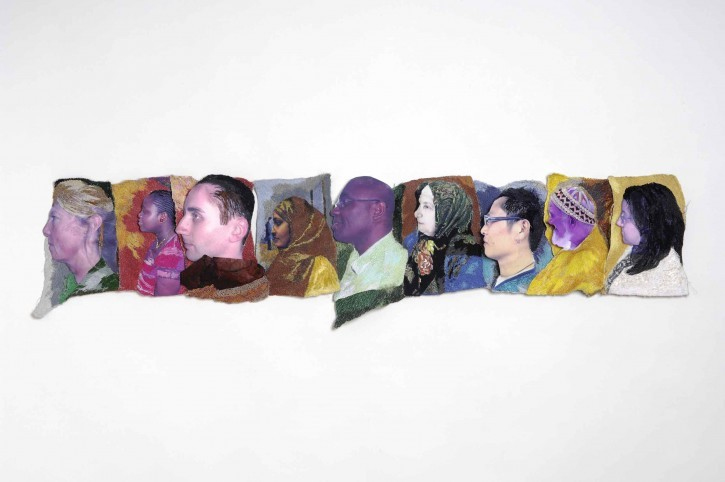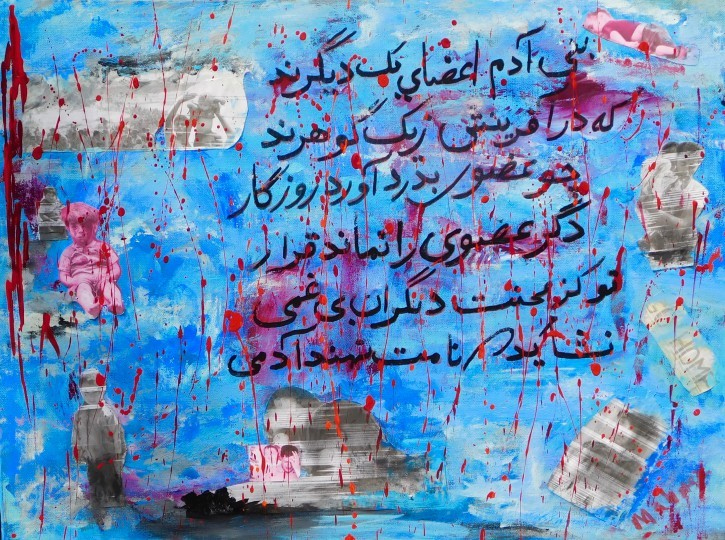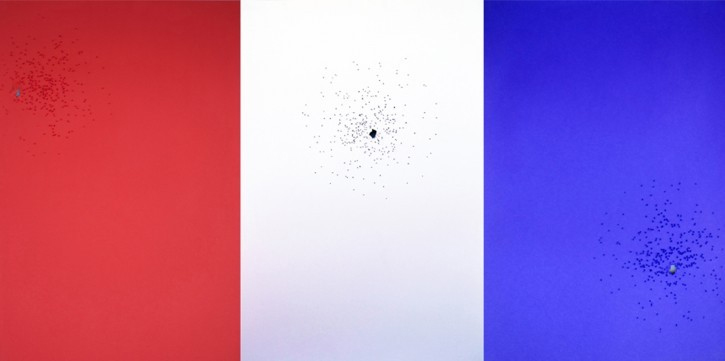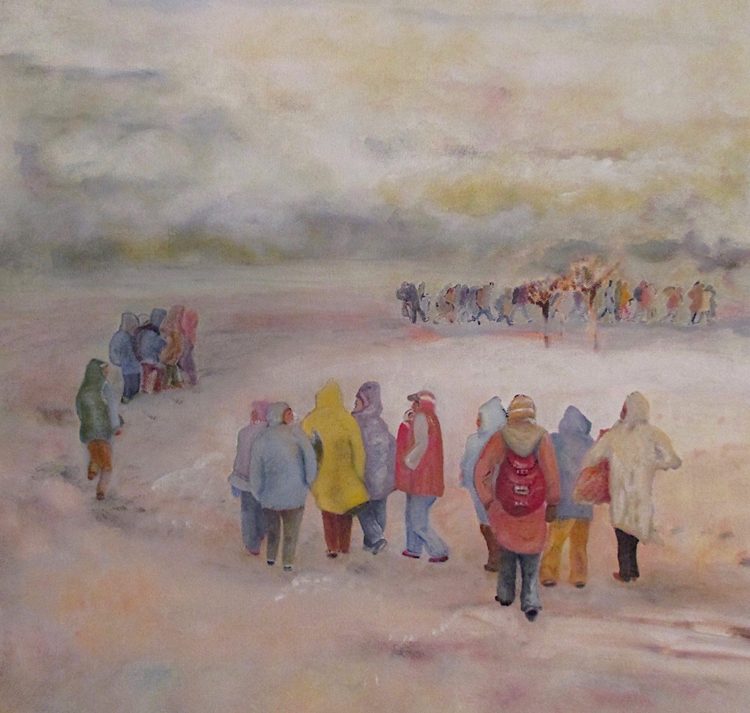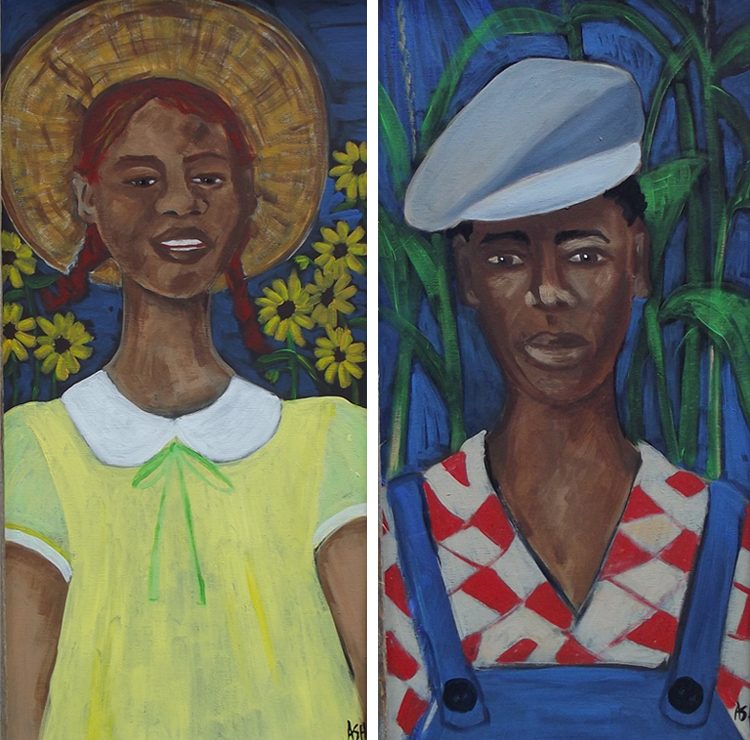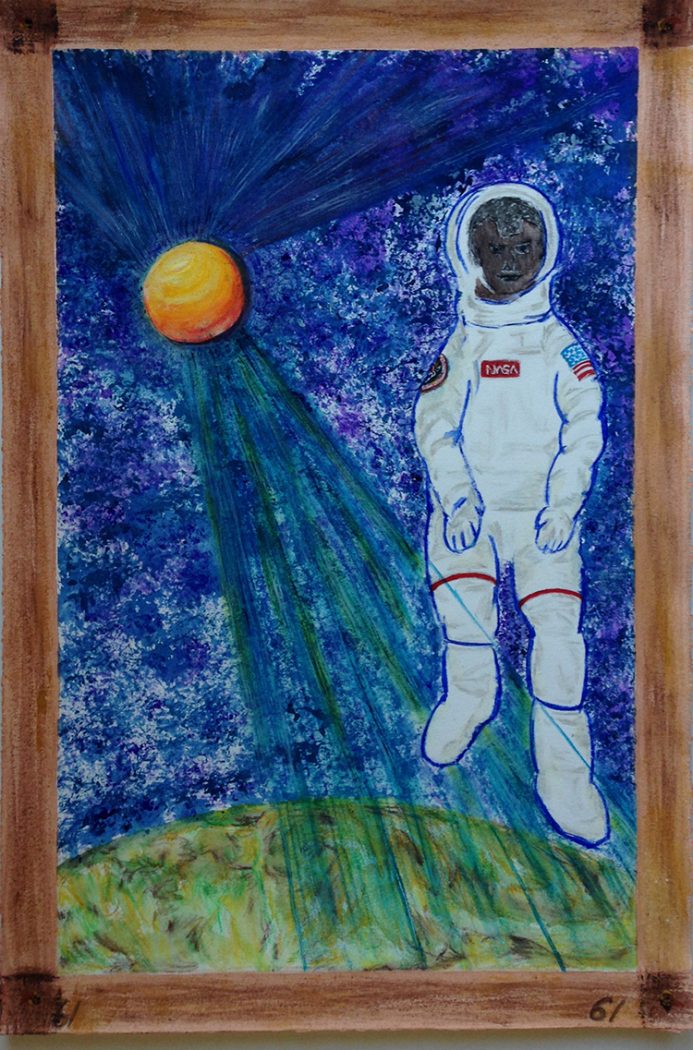In the final, 60th panel of The Migration Series, Jacob Lawrence leaves us with the words “And the migrants keep coming.” The story of migration is ongoing; what would the 61st panel look like today? Featured below are some thoughtful responses to this question by local artists. Submit your #Panel61 on our recently launched Jacob Lawrence website.
Maria-Theresa Fernandes
(Above) “This large installation is comprised of 28 panels and shows the various communities that came to the UK, the influence of their culture on the local community, and the richness of what they bringm i.e. food, life, etc.”
(Below) “This work relates to migration and shows the various communities waiting in the queue to be accepted into the country; in this instance, Britain. The work is digitally photographed and manipulated with stitch and collage.”
Brian Whelan
(Above) “In my painting Myth of Return, the passengers set out with nothing but a good wind in the sails, a single oar, and a light to steer by. All trust is put into the will of God and the new world to come. They carry little more than their songs, poems, a hope, and a prayer.”
(Below) “As a son of immigrants, I am no stranger to a new culture. Spending time in the US with my American wife has given me another address but the drive of my work remains the same: a search for a spiritual and metaphorical home, which finds some consolation and expression in the subjects I choose to paint. These themes are often narratives drawn from life’s comic tragedies, on both secular and religious planes.”


